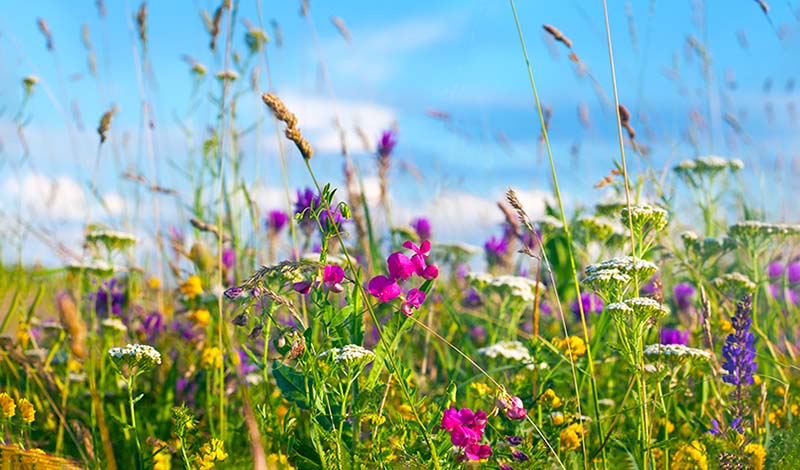
2-minute read
As the world turns, if you find yourself in need of a mood boost this summer, we’ve got just the thing—make friends with a local forest. According to public health researchers at the University of Parma, inhaling a forest atmosphere swirling with naturally occurring, mood-elevating aerosols can influence the release of dopamine and GABA, the feel-good neurotransmitters that improve cognitive function, increase feelings of well-being and relaxation, and improve quality of sleep.
Any type of forest in particular? Cone-producing pine, fir, and cypress trees release the highest concentration of beneficial aerosols limonene and pinene, so forests where conifers are king are your best bet to brighten your spirits. Hitting the trail two hours after dawn through to early afternoon is the optimum time for a one-hour forest wander when well-being-enhancing phytochemicals are at peak release.
In addition to tree aerosol inhalation being good for your headspace, regular visits to a forest can improve your overall health. On average, we spend about 90% of our daily lives indoors, under artificial light, which keeps our minds and bodies in a constant state of low-level stress. Exposure to the green scenery, fresh air, clean water, and soothing sounds and scents of nature reduces excess cortisol and adrenaline, stress hormones that can lead to high blood pressure and heart disease.
The International Society of Nature and Forest Medicine recommends forest therapy as an effective, evidence-based, low-cost public health treatment for stress-related symptoms—not to mention doomscrolling induced brain wobble. So, if you’re looking for a free and easy way to crush the cortisol, head out to a forest near you—the conifers are calling.
Lovely, trusty trees—releasing healing aerosols and absorbing greenhouse gas—providing nature-based solutions to everyday stress and climate change. So worth hugging.

ICYMI Nature News
No Bowling for Pandas
Scientists have concluded that pandas developed a long, large thumb-like digit for gripping bamboo six million years ago. Modern-day pandas forfeited the big thumb for a shorter, flatter, hooked digit that enables them to grip tasty greens while also better distributing their weight when roaming. No bowling—or texting—for today’s pandas, but they’re still masters at manipulating bamboo.
Every Frog’s Dream Pad
A newly identified water lily species discovered by researchers in Bolivia has broken the world’s record for leaf size—10.5 feet across. Holy leaping lily pads, that’s one mighty leaf!
Chomping Down on Climate Change
Bison reintroduced to the Oklahoma prairie are taking a bite out of climate change and helping to protect native plants and wildlife through selective grazing. This is how they do it. Chomp on, big fellas.
Wake Riding Whales
For the first time, humpback whales have been recorded wake-riding behind a ship. Scientists believe that the migrating marine mammals hitched a ride to conserve energy. Because, why swim when you can ride—clever cetaceans.
Audubon Bird Beauty Twofer
The Birdsong Project Volume II is now live, featuring works from Elvis Costello, Yo-Yo-Ma, and The Flaming Lips, among beautiful others. Listen here. And Audubon has announced the tremendously talented winners of the 2022 Audubon Summer Photography award, which happens to include a snap of our friendly local snowy owl perching in Central Park. See here.
FWP Monthly Carbon Capture Report
We’re happy to report that the trees we planted in June across five projects through Tree-Nation bring our 2nd quarter carbon capture total to slightly over one kiloton (1,007 tons). That’s equivalent to 11,330 gallons of gasoline utilized, 1,114,006 pounds of coal burnt, or 2,331 barrels of oil consumed.
That’s all for now. It’s going to be too darn hot out there next week, stay safe, good people.





























































